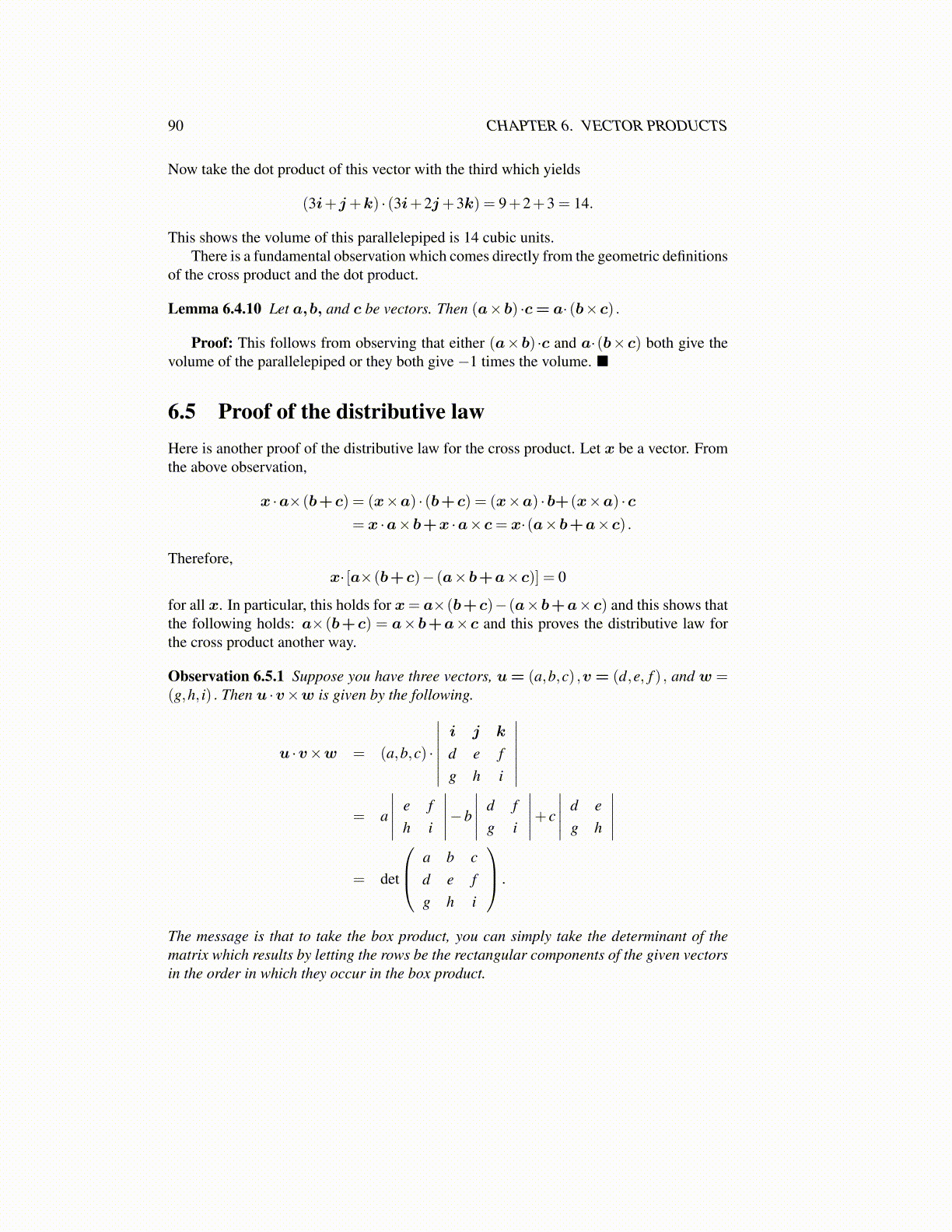
90 CHAPTER 6. VECTOR PRODUCTS
Now take the dot product of this vector with the third which yields
(3i+j+k) · (3i+2j+3k) = 9+2+3 = 14.
This shows the volume of this parallelepiped is 14 cubic units.There is a fundamental observation which comes directly from the geometric definitions
of the cross product and the dot product.
Lemma 6.4.10 Let a,b, and c be vectors. Then (a×b) ·c= a· (b×c) .
Proof: This follows from observing that either (a×b) ·c and a·(b×c) both give thevolume of the parallelepiped or they both give −1 times the volume. ■
6.5 Proof of the distributive lawHere is another proof of the distributive law for the cross product. Let x be a vector. Fromthe above observation,
x ·a×(b+c) = (x×a) · (b+c) = (x×a) ·b+(x×a) ·c= x ·a×b+x ·a×c= x·(a×b+a×c) .
Therefore,x· [a×(b+c)− (a×b+a×c)] = 0
for all x. In particular, this holds for x= a×(b+c)− (a×b+a×c) and this shows thatthe following holds: a×(b+c) = a×b+a×c and this proves the distributive law forthe cross product another way.
Observation 6.5.1 Suppose you have three vectors, u= (a,b,c) ,v = (d,e, f ) , and w =(g,h, i) . Then u ·v×w is given by the following.
u ·v×w = (a,b,c) ·
∣∣∣∣∣∣∣i j k
d e fg h i
∣∣∣∣∣∣∣= a
∣∣∣∣∣ e fh i
∣∣∣∣∣−b
∣∣∣∣∣ d fg i
∣∣∣∣∣+ c
∣∣∣∣∣ d eg h
∣∣∣∣∣= det
a b cd e fg h i
.
The message is that to take the box product, you can simply take the determinant of thematrix which results by letting the rows be the rectangular components of the given vectorsin the order in which they occur in the box product.